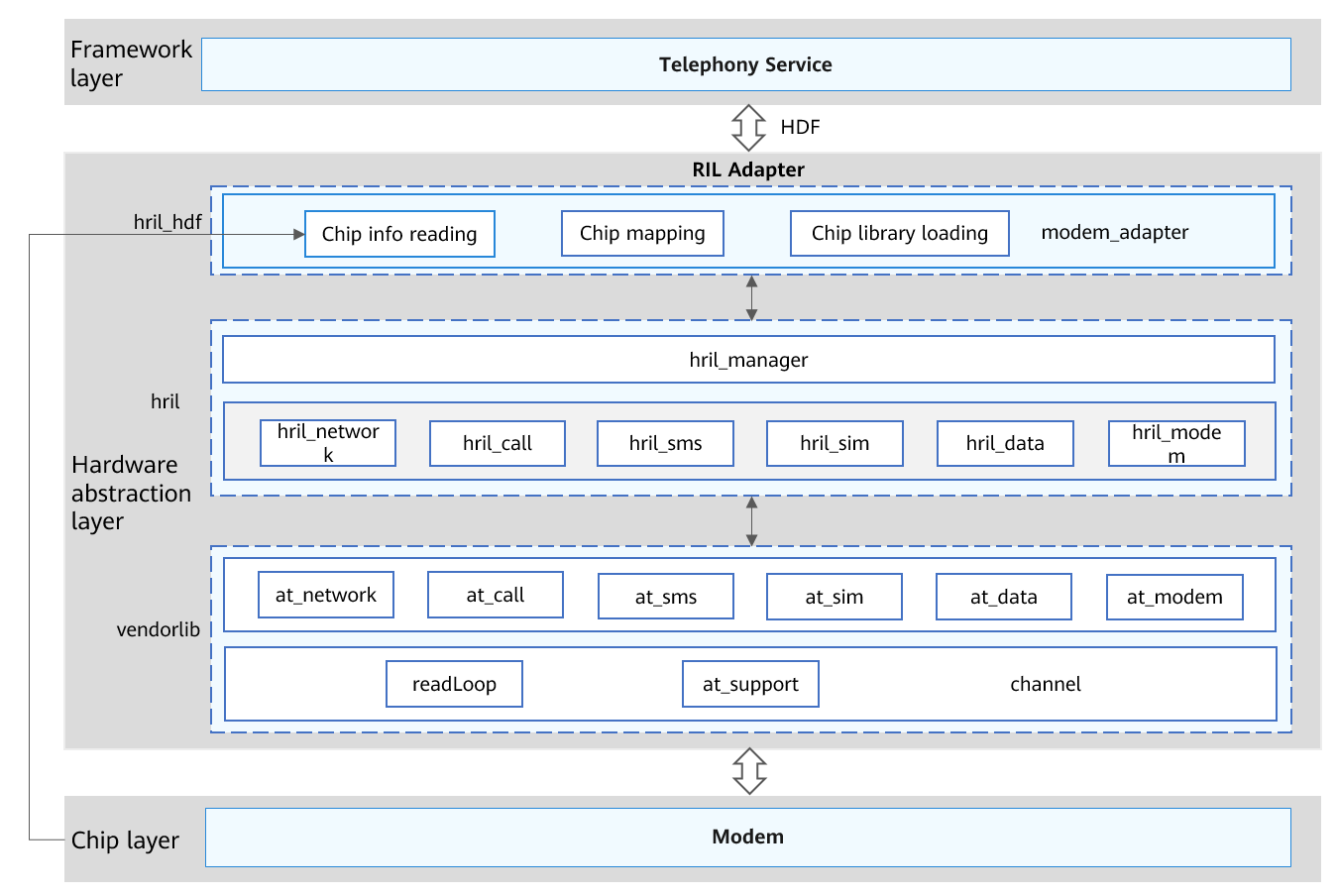harmony 鸿蒙Telephony Service
Telephony Service
Overview
This document provides development guidelines related to the telephony subsystem, including modem vendor library integration, initialization, service request responding, and modem event reporting. It is intended as a reference for developers of different modem chips, helping them efficiently develop telephony service-related functions.
Basic Concepts
Telephony Service: core service layer of the telephony subsystem. Its primary functions are to initialize the Radio Interface Layer (RIL) Manager, SIM card module, and radio module. It implements communication with the RIL Adapter by registering the callback service and implements communication between modules by subscribing to callbacks.
RIL Adapter: RIL adaptation layer of the Telephony subsystem. This layer provides functions such as vendor library loading and service API implementation. It shields the differences of modems supplied by different vendors to provide a unified API for the telephony service layer. It communicates with the telephony service layer by registering the Hardware Driver Foundation (HDF) service.
HDF: Hardware Driver Foundation, which allows for unified access from peripheral devices and provides a framework for driver development and management.
hdc_std: OpenHarmony Device Connector, a command line tool provided by OpenHarmony for developers to debug device connectivity.
Working Principles
Figure 1 Architecture of the RIL Adapter module

As shown in the preceding figure, RIL Adapter is logically divided into three layers: hril_hdf, hril, and vendorlib.
hril_hdf: unique entry of RIL Adapter. The main function of this layer is to load modem vendor library files. Wherein, modem_adapter enables a single firmware to adapt to different modems. Specifically, hril_hdf obtains the modem type from the kernel and then loads the target modem vendor library based on the modem type.
hril: OpenHarmony Radio Interface Layer, which provides APIs for communication between the vendorlib and various Telephony Service modules, including the SIM card, network search, cellular call, cellular data, and SMS/MMS modules.
vendorlib: Modem vendor library file. Different modem vendor libraries are developed based on standard APIs or service request IDs provided by RIL Adapter. (vendorlib is provided by modem vendors.)
After hril_hdf is executed, vendorlib is dynamically loaded so that it can obtain the pointers to the response processing and event reporting functions from hril_hdf. After this process is complete, hril_hdf can communicate with a modem through vendorlib.
Constraints
Specifications
At least one modem must be supported by a device vendor. If no modem is supported, vendorlib APIs do not need to be implemented.
你可能感兴趣的鸿蒙文章
harmony 鸿蒙AI Framework Development Guide
harmony 鸿蒙Neural Network Runtime Device Access
harmony 鸿蒙Application Privilege Configuration
harmony 鸿蒙Setting Up a Development Environment
harmony 鸿蒙Development Guidelines
harmony 鸿蒙Application Framework Overview
harmony 鸿蒙ArkCompiler Development
harmony 鸿蒙Window Title Bar Customization Development (ArkTS)
- 所属分类: 后端技术
- 本文标签: